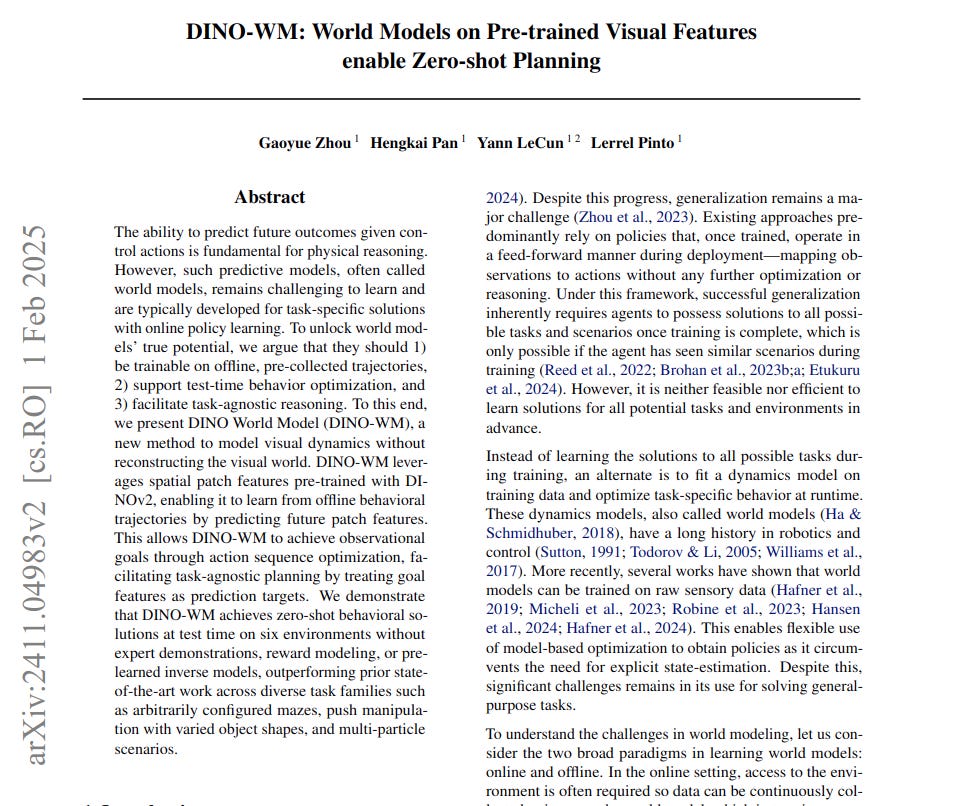"DINO-WM: World Models on Pre-trained Visual Features enable Zero-shot Planning"
Below podcast on this paper is generated with Google's Illuminate.
https://arxiv.org/abs/2411.04983
The challenge lies in creating versatile world models for physical reasoning. Current models are often task-specific and need continuous online learning. This limits their ability to generalize and adapt to new situations. This paper introduces a method to address these limitations.
This paper proposes DINO World Model (DINO-WM). DINO-WM learns visual dynamics without reconstructing visuals directly. It uses pre-trained DINOv2 features. This enables offline training and task-agnostic planning.
-----
📌 DINO World Model leverages pre-trained DINOv2 patch features. This avoids explicit pixel reconstruction. Latent space dynamics modeling improves learning efficiency and task generalization.
📌 Causal attention in the Vision Transformer based transition model is crucial. It enforces temporal consistency during prediction. Frame level prediction using patch vectors effectively captures global dynamics.
📌 Zero-shot planning is achieved due to accurate latent predictions. Model Predictive Control directly operates in the learned latent space. This optimizes actions to achieve visual goals without retraining.
----------
Methods Explored in this Paper 🔧:
→ DINO World Model (DINO-WM) leverages pre-trained DINOv2 patch features as visual input.
→ It uses a modified Vision Transformer (ViT) architecture as its core transition model.
→ The model predicts future latent states by conditioning on past latent states and actions.
→ A causal attention mechanism is integrated to ensure temporal consistency in predictions.
→ Training occurs entirely in the latent feature space, avoiding pixel-level reconstruction.
→ An optional decoder, trained separately, allows for visualizing model predictions.
-----
Key Insights 💡:
→ Pre-trained visual features, specifically from DINOv2, are highly effective for learning robust world models.
→ Modeling dynamics in the latent space is more efficient than pixel reconstruction and focuses on task-relevant information.
→ Patch-based representations from DINOv2 are crucial for capturing spatial details needed in manipulation tasks.
→ DINO-WM enables zero-shot behavioral solutions and task-agnostic planning at test time.
→ The model exhibits strong generalization to unseen environment configurations and object variations.
-----
Results 📊:
→ Achieves a 0.98 Success Rate on the Maze navigation task and a 0.90 Success Rate on the complex Push-T manipulation task.
→ Outperforms other world models in LPIPS metric, reaching 0.007 on PushT and 0.0016 on Wall environments.
→ Demonstrates strong generalization capabilities, achieving 0.82 Success Rate on WallRandom and 0.34 Success Rate on PushObj environments.


